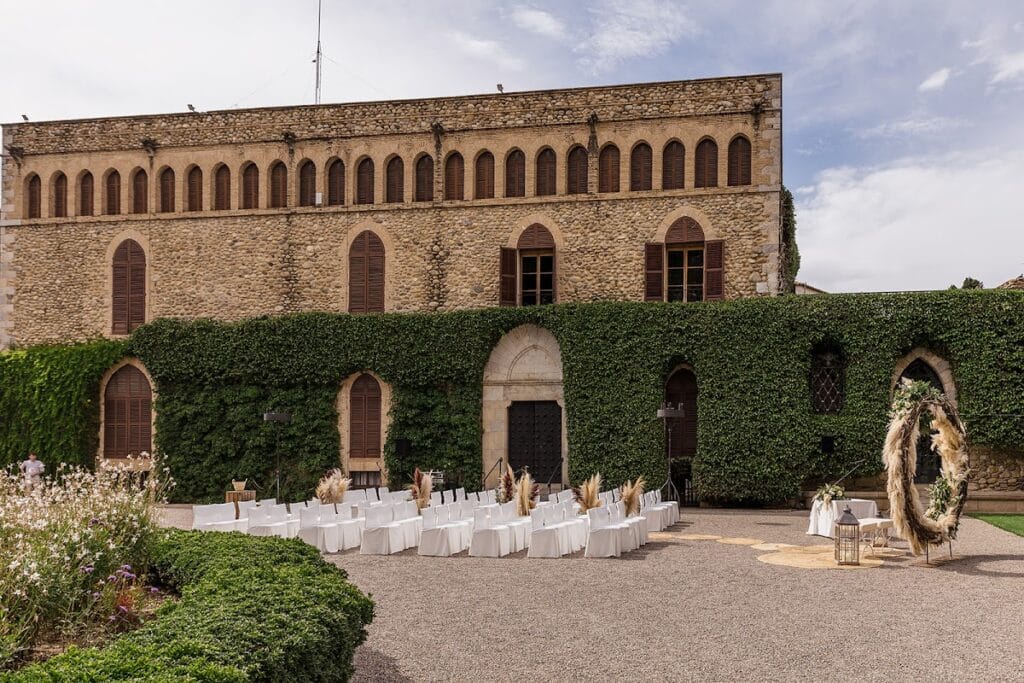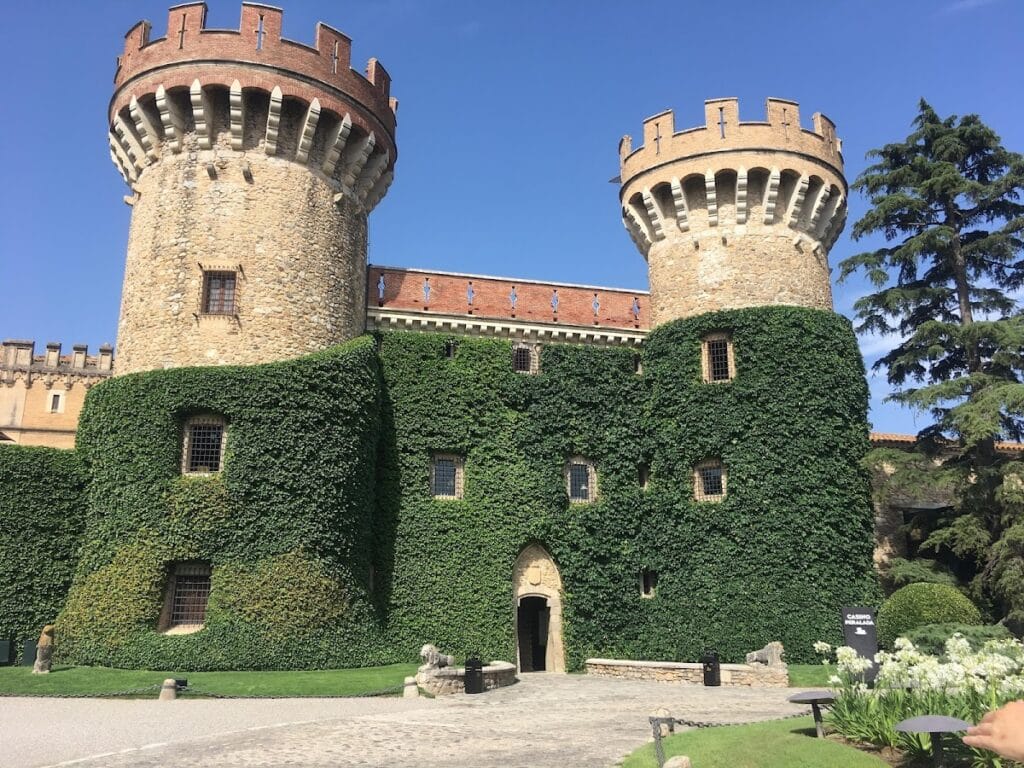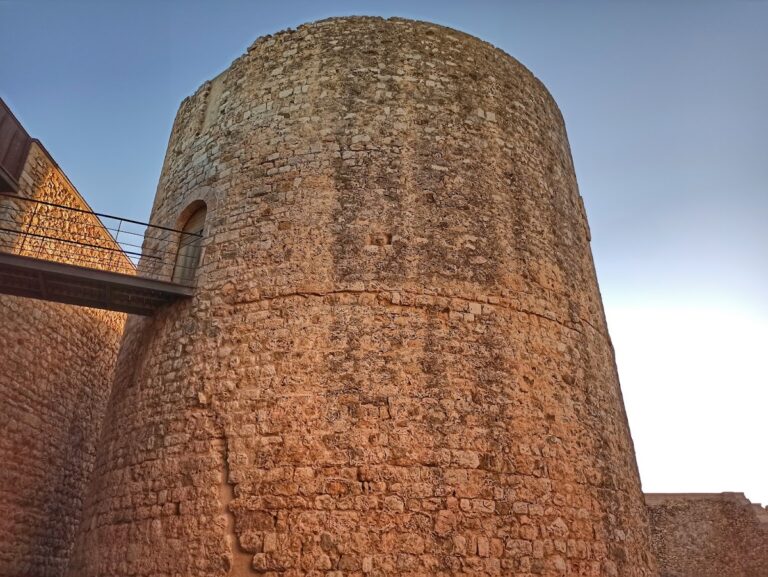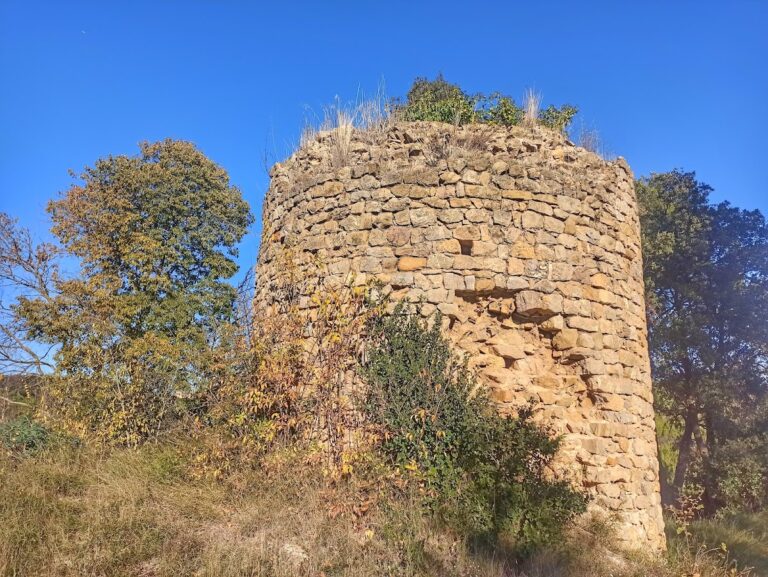Peralada Castle: A Historic Medieval Fortress and Cultural Site in Spain
Visitor Information
Google Rating: 4.5
Popularity: Medium
Google Maps: View on Google Maps
Official Website: www.castellperalada.com
Country: Spain
Civilization: Unclassified
Remains: Military
History
Peralada Castle is located in the municipality of Peralada, in modern Spain. Its origins trace back to the early Middle Ages, when it was first recorded in the 9th century under the name “castell Toló.” At this time, it belonged to the Viscounts of Peralada, descendants of Berenguer, who was the son of Count Ponç I of Empúries. This medieval fortress functioned as the center of the County of Peralada and was originally situated within the town’s defensive walls.
In 1285, the castle was completely destroyed during a French military campaign led by King Philip III of France—known as Philip the Bold—who invaded the Empordà region as part of a crusade against the Crown of Aragon. Following this destruction, the 14th century saw a significant rebuilding effort by the Rocabertí family. They reconstructed the castle outside the initial town defenses and expanded it to include a Gothic-style palace, marking a new phase in the site’s development.
Alongside the new castle, the Carmelite Order received permission in the 14th century to establish a monastery and church. The Gothic cloister of this monastery was built in the latter half of that century, with additional galleries added around 1611 to 1612. The religious complex and castle were further modified during the 16th and 17th centuries through various restorations and enlargements, while interior refurbishments were carried out in the 18th century. By roughly 1870, the last Rocabertí counts transformed the castle into a French-style palace, engaging landscape architect François Duvilliers in 1877 to design a large surrounding park.
Throughout its history, the castle witnessed periods of political significance and military occupation. In 1472, for example, King John II took control of the fortress amid the Remences War, a peasant uprising in Catalonia. Additionally, the Viscount Francesc Jofre de Rocabertí was elevated to the noble title of Count of Peralada by King Philip III of Spain in 1599, cementing the family’s prominence.
After centuries of continuous use, the castle faced abandonment following the death of Tomàs de Rocabertí-Boixadors Dameto i de Verí in 1898, as he left no heirs. The estate fell into disuse and risked deterioration until 1923, when Miquel Mateu i Pla, a Catalan industrialist and banker, purchased the property. Mateu restored and expanded the castle and its grounds, created a notable private art collection, and established the Museu del Castell de Peralada within the complex.
The Carmelite monks had vacated the monastery in 1835, after which the Rocabertí family repurposed the building as a school. Ownership remained within the Mateu family into the late 20th and early 21st centuries, including Carmen Mateu Quintana, who founded the Peralada Music Festival in 1987, an event still hosted on the estate. Since 1979, the castle has also included the Casino de Peralada, operated by a company owned by the Mateu family. This casino was among the first to be legalized in Spain following the Franco dictatorship.
The family’s contributions extended to cultural preservation. A historic library created by the Rocabertí counts in the mid-19th century was considerably enlarged by Miquel Mateu, now holding over 80,000 volumes, notably featuring editions of Don Quixote in 33 different languages. The former Carmelite convent also houses a glass museum, showcasing around 2,500 glass artifacts and 1,000 ceramic items, including archaeological finds from Empúries and other ancient civilizations. The castle’s long-standing tradition of wine production, rooted in the monastery’s cellars, was industrialized in the 20th century by Mateu. The estate continues to produce the signature Peralada Cava “Gran Claustro,” which is still aged in the original vaulted wine cellars.
Remains
Peralada Castle occupies a roughly rectangular site just outside the medieval town walls on the eastern side of Peralada’s historical center. The building’s layout is organized around a central square courtyard, with rooms and halls arranged on all sides. The structure has a ground floor, a first floor, and an attic space, all covered by pitched roofs.
The eastern façade features two circular towers distinguished by battered bases, where the walls slope inward towards the top, providing added stability. These towers are offset from the corners and display decorative brick corbels supporting battlements, lending crenellated profiles used historically for defense. The openings along this side include lowered arches and rectangular windows framed with a combination of stone and brick. Positioned between the towers is a rectangular brick pediment where loophole-like openings, resembling narrow vertical slits once used for archery, are repeated in the battlements above.
Facing west, the main façade exhibits Renaissance characteristics. Constructed from large, roughly cut stone blocks divided horizontally to mark the interior floors, it presents a central entrance with a semicircular arch. This doorway is flanked by Corinthian columns supporting an entablature, which once held a detailed alabaster coat of arms of the Rocabertí family, though the emblem is now heavily weathered. Windows here are rectangular with ornamented lintels, and an attic-level gallery features a series of semicircular arches.
The southern façade contrasts with the western front, using variously sized stone cobbles bound with mortar to create the wall surface. Windows on this side are rectangular and framed with stone blocks, except for one lowered-arch entrance. The ground floor contains four large windows that open outward, while the first floor is adorned with five balconies supported by corbels beneath molded lintels. Crowning this wall is a decorated battlement upheld by semicircular arches functioning as corbels.
On the northern side, three extensive rectangular wings provide space for the castle’s modern facilities. This sector’s northern façade incorporates two large Gothic coronelle windows, characterized by pointed arches and tracery typical of medieval ecclesiastical architecture. A monumental door here grants access to the castle’s gardens.
Surrounding the castle is a large landscaped park covering about 77,000 square meters. Designed in 1877 by François Duvilliers, the park initially planned for 158 different plant species but currently features 63 distinct landscaped zones. The grounds include a pond and a 19th-century bridge connecting the park to the adjacent Carmelite convent.
The former Carmelite monastery retains several medieval architectural elements. Its Gothic cloister, dating from the late 14th century, was later extended with additional galleries in the early 1600s. The neighboring Gothic-style church of El Carme has a single nave with side chapels nestled between flying buttresses, which are external supports typical of Gothic architecture. Inside, the wooden polychrome ceiling is supported by five pointed arches, with carved wooden heads at the beam ends representing former monks. The church’s south wall features a bell gable with two openings, and its west façade is marked by a 15th-century Gothic main portal, depicting a Virgin Mary figure placed beneath angels, topped by a rose window. The choir floor bears tiles decorated with the coat of arms of the Counts of Peralada, and the altar area displays Belgian tapestries inspired by the Baroque painter Rubens.
Beneath the monastery, vaulted cellars preserve historic wine-making equipment, including large presses, goat leather wine bags, and traditional Catalan vessels called porróns. Ancient oak barrels remain in use, notable for their olive wood hoops rather than metal. A large simulated wine barrel has been transformed into a tasting room by Miquel Mateu, blending heritage with modern function.
Two medieval twin towers within the complex now house the restaurant del Castell, which features terraces overlooking the park. The Museu del Castell de Peralada, situated in the former Carmelite convent, encompasses a library-archive, the glass museum—with thousands of glass and ceramic artifacts—and a wine museum. All these spaces are accessible to the public through guided tours, presenting a comprehensive view of the site’s layered history and cultural legacy.










